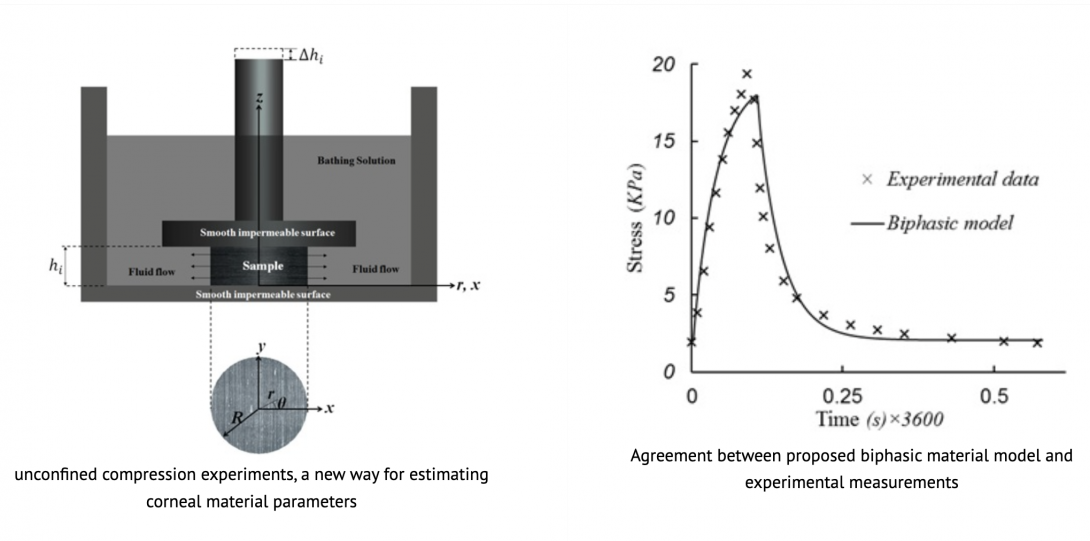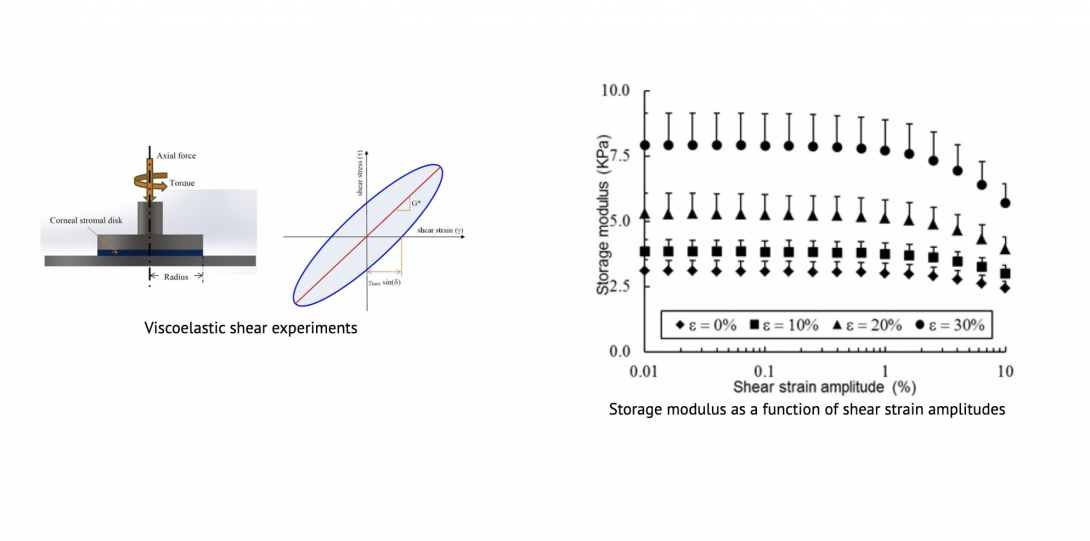Biomechanics and Biomaterials
Biomechanics and Biomaterials Heading link
The underlying mechanisms of the unique biomechanical properties of soft hydrated tissue are not yet fully understood. Our long-term objective is to create a numerical framework which enables us to describe their mechanical response, as observed in experimental measurements, based on the molecular level mechanisms propagated through their hierarchical structure. For this purpose, we use both numerical and experimental techniques. In particular, we have focused on biomechanical properties of the cornea.
The cornea can be considered as the window of the eye. It is a transparent soft which transmits more than 90% of the incident light and is responsible for 70% of the refractive power of the eye. The refractive power and transparency are because of its highly regular lamellar microstructure. Throughout the world, the uncorrected refractive error is the most common cause of impaired vision. According to NHNES, over 110 million Americans may achieve normal vision with refractive correction such as LASIK and LASEK. Although several mathematical models exist for the optical performance of the cornea after keratorefractive surgery, the accuracy of their predictions highly depends on the accuracy of corneal material parameter estimates.
We have used a number of different experiments such as tensile, shear, and compression to characterize the biomechanical properties of the cornea and elucidate the importance of hydration on the measured material parameters. We have also developed multi-phasic material models to analyze the experimental measurements. Specifically, the cornea is represented as an incompressible homogenous elastic porous solid matrix filled with an incompressible fluid phase.
We are currently working on developing multiscale techniques to describe the biomechanical response of the cornea in normal and/or diseased conditions. We are also investigating the biomechanical properties of other ocular components and similar soft tissues.




